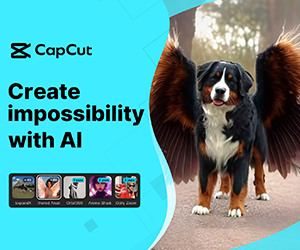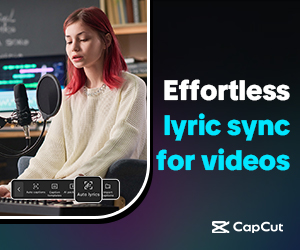 Pin
Pin Photo from Freepik
The morning started like any other. Coffee brewing, emails loading, spreadsheets waiting. But by 3:47 PM, my eight-year career as a content analyst was over. An AI system had proven it could do my job faster, cheaper, and without sick days or vacation requests. The pink slip came wrapped in corporate speak about “technological advancement” and “operational efficiency.”
Sound familiar? You’re not alone. Millions of professionals worldwide are facing the same reality as artificial intelligence reshapes entire industries overnight. The question isn’t whether AI will impact your career – it’s how you’ll respond when it does. Will you become another casualty of automation, or will you transform displacement into opportunity?
This is the story of how I went from unemployed and desperate to landing a role that paid 40% more than my previous position – all within 60 days. More importantly, it’s a roadmap for anyone facing the same challenge. The future belongs to those who learn to work with AI, not against it. Here’s how I discovered that the technology threatening my livelihood could actually become my greatest professional asset.
Table of Contents
The Day Everything Changed
The email arrived at 3:47 PM on a Tuesday. Subject line: “Workforce Optimization Update.” I stared at my screen, coffee growing cold, as the words blurred together. After eight years of dedicated service, my position as a content analyst was being eliminated. The company had implemented an AI system that could process data faster than our entire team combined.
My hands trembled as I scrolled through the corporate jargon. “Technological advancement,” they called it. “Streamlining operations for future growth.” But all I heard was the sound of my career crashing down around me. The AI system they’d been testing for months had proven so efficient that it made human analysts obsolete overnight.
That evening, I sat in my car in the parking lot, unable to face going home. How do you tell your family that a machine has taken your livelihood? The irony wasn’t lost on me – I’d actually helped train the very system that would replace me. Every spreadsheet I’d organized, every report I’d perfected, had become data points feeding the algorithm that sealed my fate.
The Shock and Denial Phase
The first week felt like living in a fog. I went through the motions of my final days at the office, watching colleagues avoid eye contact in the hallways. Some whispered sympathetic words, others seemed relieved it wasn’t them. The AI system hummed quietly in the server room, processing what used to be my life’s work in mere seconds.
Sleep became elusive. I’d lie awake at 2 AM, mind racing with questions that had no answers. Was this the future of work? Would other industries follow suit? My wife found me one morning, laptop open, frantically searching job boards that seemed increasingly irrelevant. Every posting required skills I didn’t have or mentioned “AI familiarity” as a prerequisite.
The severance package bought us time, but time felt like quicksand. Days blended into nights as I oscillated between anger and despair. Friends offered hollow reassurances about “new opportunities” and “silver linings.” But they didn’t understand – this wasn’t just about losing a job. It was about losing my identity, my purpose, my place in a world that seemed to be moving forward without me.
The Wake-Up Call That Changed Everything
Three weeks into unemployment, my daughter asked a simple question that shattered my self-pity. “Dad, why don’t you just learn what the robot knows?” Her innocent curiosity cut through months of defeated thinking. She was right – instead of competing against AI, maybe I needed to understand it, work alongside it, or find ways to do what it couldn’t.
That night, I made a decision that would reshape my entire future. I enrolled in an online course about artificial intelligence and machine learning. The first lesson was humbling – I realized how little I actually knew about the technology that had displaced me. But with each module, my fear transformed into fascination. The AI wasn’t magic; it was a tool, and tools could be learned.
My wife noticed the change immediately. The defeated man who’d been shuffling around the house for weeks suddenly had purpose again. I set up a makeshift office in our garage, surrounded by notebooks filled with code snippets and flowcharts. For the first time since that devastating email, I felt like I was moving forward rather than drowning in regret.
Building Skills While the World Slept
The learning curve felt steeper than Mount Everest. Python programming made my brain hurt, and machine learning algorithms seemed like ancient hieroglyphics. But I had something most students didn’t – desperation mixed with determination. Every rejected job application became fuel for another late-night study session. I treated unemployment like a full-time education program.
YouTube became my university. I discovered channels where experts explained complex concepts in simple terms. Khan Academy, Coursera, and free coding bootcamps filled my days with structure and purpose. My coffee consumption doubled, but so did my understanding of data science, automation, and AI applications. I learned to speak the language that had once seemed foreign and threatening.
The breakthrough came during week six of intensive learning. I built my first automated data analysis tool – crude and simple, but it worked. My former colleagues would have spent hours on what my script accomplished in minutes. For the first time since losing my job, I felt powerful again. I wasn’t just learning to survive in an AI world; I was learning to thrive in it.
Turning Knowledge Into Opportunity
Armed with new skills, I started approaching the job market differently. Instead of applying for traditional analyst positions, I targeted roles that required human-AI collaboration. Companies needed people who could bridge the gap between automated systems and human decision-making. My unique perspective – having worked both with and against AI – became my greatest asset.
The first interview callback felt like winning the lottery. A marketing firm needed someone who could interpret AI-generated insights and translate them into actionable business strategies. They weren’t looking for a programmer; they wanted a translator. My years of experience in data analysis, combined with my newfound AI literacy, made me the perfect candidate for this emerging role.
Networking took on new meaning. I joined online communities where professionals discussed AI implementation challenges. I shared my story of transformation, and others began reaching out with questions and opportunities. LinkedIn became my platform for demonstrating expertise, not just searching for jobs. Each post about AI applications in business generated conversations that led to consulting opportunities and job referrals.
The First Victory and New Beginnings
The job offer arrived exactly 60 days after my termination. A tech startup needed an AI Strategy Consultant – a role that hadn’t existed when I was first displaced. The irony was beautiful: the same technology that had eliminated my old position had created an entirely new career path. The salary was 40% higher than my previous job, with better benefits and flexible remote work options.
My first day felt like stepping into a parallel universe. Instead of competing with algorithms, I was directing them. My job involved analyzing AI outputs, identifying blind spots, and ensuring that automated decisions aligned with human values and business objectives. The machine handled the heavy lifting while I provided the strategic thinking and ethical oversight it couldn’t manage.
The learning never stopped, but now it was part of my paid responsibilities. Each project taught me something new about AI capabilities and limitations. I discovered that the future of work wasn’t about humans versus machines – it was about humans and machines working together. My story of displacement and recovery became a case study the company shared with clients facing similar transitions.
Lessons Learned and Wisdom Gained
The most important lesson wasn’t technical – it was psychological. Resistance to change had kept me stuck in victim mode for weeks. The moment I embraced curiosity over fear, everything shifted. AI wasn’t the enemy; it was simply the new reality of modern work. Fighting against technological progress was like trying to stop the tide with bare hands.
Adaptability became my superpower. The skills I learned weren’t just about programming or data analysis – they were about learning how to learn. In a world where technology evolves rapidly, the ability to acquire new competencies quickly matters more than any specific knowledge. I developed a growth mindset that served me far beyond my career recovery.
My relationship with technology fundamentally changed. Instead of seeing AI as a threat, I began viewing it as a powerful collaborator. The same algorithms that once seemed intimidating became tools that amplified my human capabilities. I learned to ask better questions, think more strategically, and focus on the creative and interpersonal aspects of work that machines couldn’t replicate.
Paying It Forward and Helping Others
Six months into my new role, I started mentoring others facing AI displacement. The support groups I joined during my darkest days became platforms for sharing hope and practical advice. Each person I helped reminded me how far I’d traveled from that devastating Tuesday afternoon. Their success stories became my greatest source of professional satisfaction.
I developed a simple framework for career transition that others could follow. First, understand the technology that’s changing your industry. Second, identify skills that complement rather than compete with AI. Third, position yourself as a bridge between human insight and machine efficiency. This wasn’t just theory – it was a proven path that had worked for dozens of professionals I’d guided.
The ripple effect surprised me. Companies began reaching out for consultation on managing AI transitions humanely. They wanted to avoid the trauma and waste of talent that came with abrupt technological changes. My experience became valuable not just to individuals, but to organizations seeking to navigate digital transformation while preserving their human workforce.
The Evolution Continues
A year later, my role had evolved beyond recognition. The startup promoted me to Head of Human-AI Integration, a position that didn’t exist in any corporate hierarchy before. My job involved designing workflows where human creativity and AI efficiency created outcomes neither could achieve alone. Every day brought new challenges that required innovative solutions rather than routine responses.
The AI systems I worked with had become more sophisticated, but so had my ability to guide and optimize them. I learned that the most successful AI implementations weren’t just about technology – they required deep understanding of human psychology, business strategy, and ethical considerations. My background in traditional analysis, combined with AI literacy, made me uniquely qualified for these complex challenges.
Industry conferences began inviting me to speak about AI transition strategies. What started as a personal survival story had become a professional expertise that companies worldwide wanted to understand. The same experience that once felt like career death had transformed into a specialized knowledge that was increasingly valuable in our rapidly changing economy.
Your Action Plan for Fighting Back
Start with mindset before skillset. Accept that resistance only delays inevitable adaptation. The energy spent fighting change could be redirected toward understanding and leveraging it. Set aside time each day for learning, even if it’s just 30 minutes. Consistency matters more than intensity when building new competencies that will define your future career trajectory.
Identify your industry’s AI applications and focus your learning there. A marketing professional should understand AI content generation, while a financial analyst should explore automated reporting tools. Don’t try to become a programmer overnight – instead, become fluent in how AI can enhance your existing expertise. This targeted approach makes learning manageable and immediately applicable.
Build a support network of others navigating similar transitions. Join online communities, attend virtual meetups, and connect with professionals who’ve successfully adapted to AI integration. Share your learning journey openly on professional platforms. Your vulnerability and growth will attract opportunities and connections that accelerate your transformation from displacement to advancement.
The Future Is Human After All
Two years have passed since that life-changing email arrived. The man who once feared obsolescence now helps shape the future of work. My story isn’t unique – thousands of professionals have transformed AI displacement into career advancement. The key was recognizing that human skills like creativity, empathy, and strategic thinking become more valuable, not less, in an AI-driven world.
The irony is profound: the technology that threatened to make me irrelevant actually made me more essential. Companies need humans who can think beyond algorithms, who can provide context that machines miss, and who can ensure that AI serves human purposes rather than replacing human judgment. My career today is more fulfilling and impactful than anything I could have achieved in my previous role.
FAQs
Recovery varies, but with focused learning and networking, most people find new opportunities within 3-6 months. The key is starting immediately.
Focus on AI collaboration, data interpretation, strategic thinking, and human-centered skills like communication and creativity that complement automation.
Absolutely. Experience combined with AI literacy creates unique value. Many companies prefer seasoned professionals who understand both traditional and modern approaches.
Basic coding helps, but focus on understanding AI applications in your field. You don’t need to be a programmer to work effectively with AI systems.
Search for roles with terms like “AI integration,” “automation specialist,” “data strategy,” or “digital transformation” combined with your industry keywords.

































